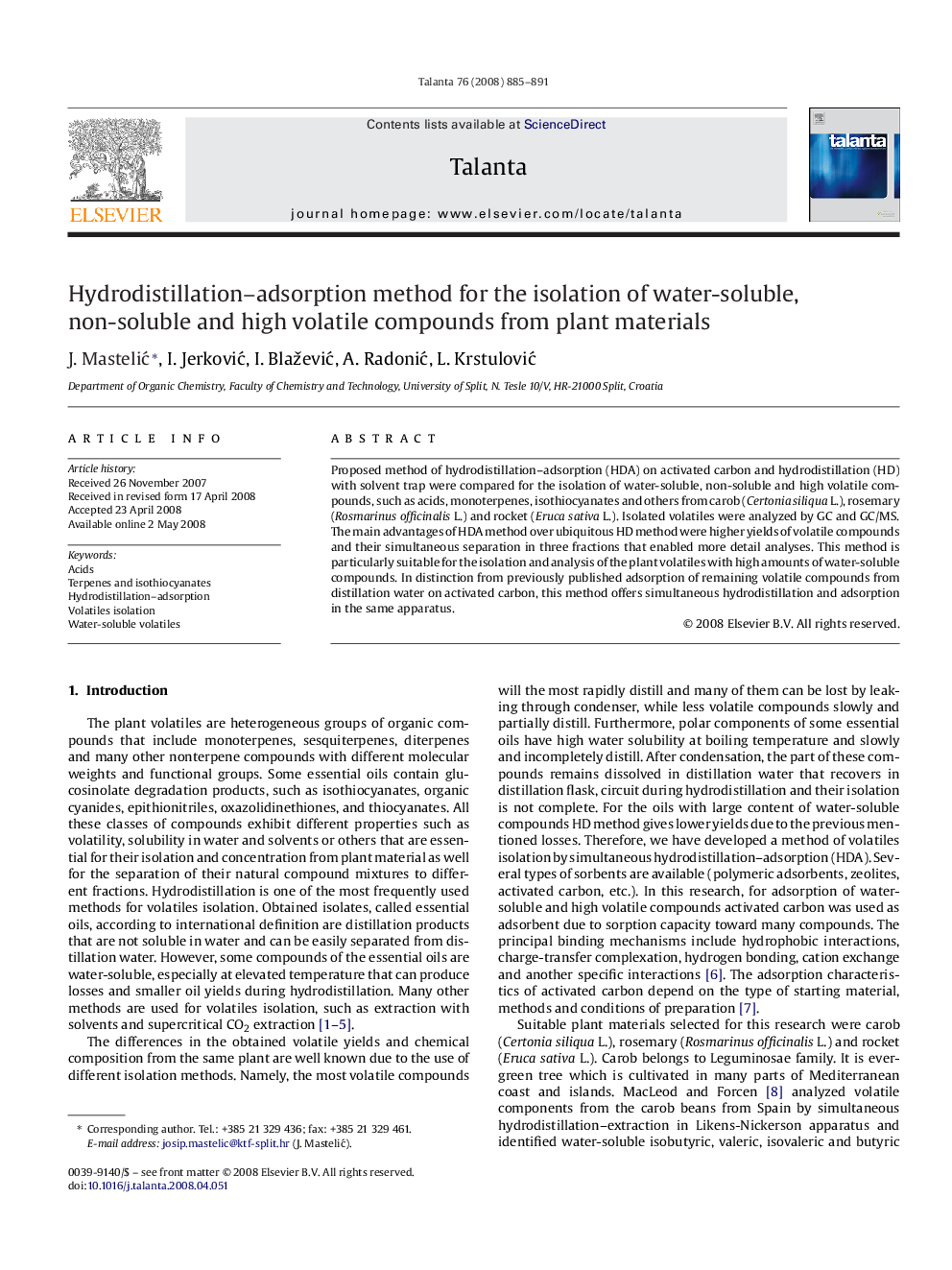| Article ID | Journal | Published Year | Pages | File Type |
|---|---|---|---|---|
| 1243396 | Talanta | 2008 | 7 Pages |
Proposed method of hydrodistillation–adsorption (HDA) on activated carbon and hydrodistillation (HD) with solvent trap were compared for the isolation of water-soluble, non-soluble and high volatile compounds, such as acids, monoterpenes, isothiocyanates and others from carob (Certonia siliqua L.), rosemary (Rosmarinus officinalis L.) and rocket (Eruca sativa L.). Isolated volatiles were analyzed by GC and GC/MS. The main advantages of HDA method over ubiquitous HD method were higher yields of volatile compounds and their simultaneous separation in three fractions that enabled more detail analyses. This method is particularly suitable for the isolation and analysis of the plant volatiles with high amounts of water-soluble compounds. In distinction from previously published adsorption of remaining volatile compounds from distillation water on activated carbon, this method offers simultaneous hydrodistillation and adsorption in the same apparatus.
